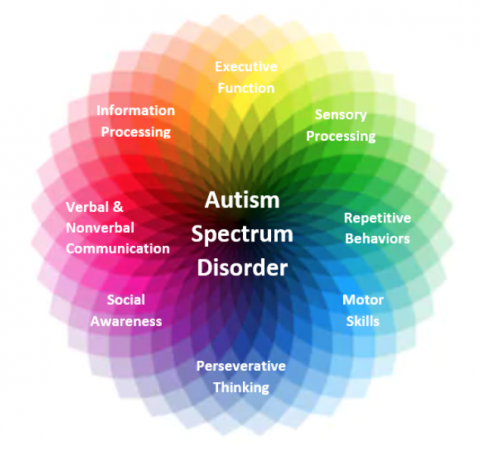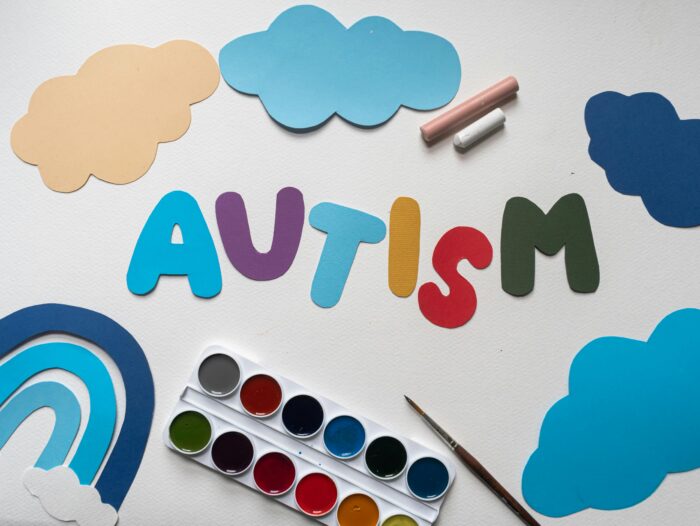Browsing Social Obstacles: Tips for Individuals Living with Autism
Browsing Social Obstacles: Tips for Individuals Living with Autism
Blog Article
Checking Out Autism: Approaches for Effective Interaction and Communication
Effective interaction and communication with people on the autism range require an extensive understanding of their distinct requirements and preferences. The details of these strategies disclose additional considerations that warrant exploration, particularly in just how they can be adjusted to individual experiences and varied contexts.
Understanding Autism Range Disorder
Autism Range Disorder (ASD) incorporates a variety of neurodevelopmental conditions characterized by obstacles in social interaction, interaction, and repeated actions. The term "spectrum" mirrors the diverse symptoms and differing degrees of extent experienced by individuals with ASD. While some might exhibit considerable impairments, others may present high-functioning traits, enabling for better self-reliance in day-to-day life.
The onset of ASD commonly happens in very early childhood, with indications often identifiable by age 2. Early indicators may include postponed speech development, restricted eye get in touch with, and difficulties in understanding social cues. The specific etiology of ASD remains unclear, research recommends a mix of hereditary and ecological factors plays an essential role in its advancement.
As an outcome, interventions and support customized to private needs are essential for cultivating interaction and social skills. Recognizing the intricacy of ASD is essential for promoting understanding, acceptance, and effective approaches that assist in meaningful communications with people on the spectrum.

Relevance of Clear Interaction
Reliable interaction is vital for cultivating understanding and link, specifically for people with Autism Spectrum Condition (ASD) Clear communication not only facilitates social communications but additionally improves the individual's ability to share their feelings, thoughts, and demands. For people with ASD, the nuances of language can often be testing; as a result, using unambiguous and uncomplicated language is necessary.
Furthermore, clear interaction assists reduce frustration and stress and anxiety that may develop from misunderstandings. When messages are shared in a direct and consistent way, individuals with ASD are much better equipped to analyze information properly, which can considerably boost their social engagement and engagement in different setups.
Establishing regimens and using aesthetic supports can further boost clear communication. These approaches offer people with predictable structures that aid understanding and retention of info. In addition, proactively being and paying attention patient throughout communications promotes an encouraging setting where individuals with ASD really feel valued and recognized.
Ultimately, focusing on clear interaction not only empowers people with ASD but likewise promotes even more meaningful connections with their peers, caretakers, and the bigger neighborhood, leading the way for comprehensive interactions and collective partnerships. - autism
Non-Verbal Communication Strategies
Interaction extends beyond words, and for individuals with Autism Range Disorder (ASD), non-verbal hints play a substantial role in interactions. Non-verbal communication methods can consist of faces, gestures, body language, and eye get in touch with, every one of which work as crucial components for communicating emotions and purposes.
Comprehending and analyzing these non-verbal signals can improve interactions with individuals with ASD. As an example, a warm smile or open position can create a welcoming atmosphere, encouraging engagement. Similarly, using visual aids-- such as image cards or icons-- can connect interaction voids and aid communicate messages better.
It is also important to be conscious of individual space, as individuals with ASD might have various convenience levels relating to distance. Observing their reactions to physical nearness can inform proper changes.

Creating Supportive Environments
Producing a helpful atmosphere is essential for promoting positive communications and boosting the wellness of individuals with Autism Spectrum Disorder (ASD) Such settings can significantly reduce anxiousness and develop a feeling of security, allowing people to reveal themselves a lot more freely.
To attain this, it is important to consider sensory level of sensitivities that people with ASD might experience. Customizing the physical room to include soft lighting, very little background sound, and comfortable seats can create a soothing atmosphere. In addition, using regular routines and clear aesthetic schedules can aid individuals look at here prepare for shifts and reduce uncertainty, more promoting convenience.
Social spaces should be structured to minimize frustrating stimulations while offering possibilities for involvement in preferred activities. Facilitating locations marked for silent time can also function as a haven during minutes of stress and anxiety. Significantly, integrating aspects of selection equips people, enabling them to exercise firm in their atmosphere.

Motivating Social Interactions
Cultivating social interactions among individuals with Autism Range Condition (ASD) needs deliberate strategies that prioritize comfort and interaction. Establishing predictable routines can help in reducing anxiousness, making social settings extra friendly. Creating organized atmospheres with specified functions and obligations enables people to engage without the frustrating stress of disorganized social characteristics.
Integrating interests and toughness into social tasks can function as a stimulant for interaction. As an example, arranging group tasks around shared hobbies or topics of fascination can facilitate all-natural conversations and connections. Furthermore, utilizing visual supports, such as social manuscripts or photographic timetables, can help in recognizing social hints and assumptions.
Modeling proper social habits is important - autism. Peers and grownups need to show efficient interaction strategies, including energetic listening and turn-taking. Role-playing circumstances can additionally give a safe area for people to exercise these skills
Finally, promoting peer relationships via comprehensive techniques is crucial. Urging comprehensive playdates or team getaways can create chances for socializing in a comfy setup. By implementing these caretakers, teachers and strategies can substantially boost social interactions for people with ASD, advertising their total social advancement and read this post here wellness.
Final Thought
Finally, efficient interaction and interaction methods are essential for sustaining individuals with Autism Range Disorder. Emphasizing clear language, incorporating non-verbal hints, and developing predictable routines considerably improve involvement and lower stress and anxiety. Creating helpful settings cultivates safe social communications, while urging shared rate of interests facilitates purposeful links. Eventually, these techniques encourage individuals with autism to navigate social landscapes, advertising their total health and enabling the growth of long-term partnerships.
Efficient communication and interaction with people on the autism spectrum necessitate a detailed understanding of their special needs and choices. Clear interaction not only promotes social communications but likewise enhances the individual's capacity to reveal their emotions, requirements, and ideas.Cultivating social interactions amongst people with Autism Range Condition (ASD) calls for intentional methods that focus on convenience and interaction. By implementing these caretakers, techniques and educators can considerably boost social communications for people with ASD, advertising their total social growth and well-being.
In final thought, efficient communication and interaction approaches are vital for sustaining people with Autism Range Condition.
Report this page